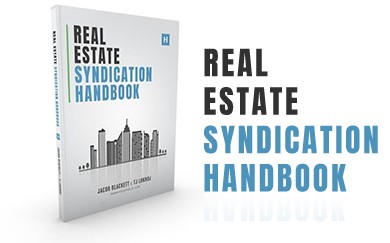If you ask the wealthiest people in the world how they came about their riches, the majority will tell you they’ve come through inheritance or investments. While most of us have no control over our inheritance, we can control how we choose to invest our money.
The multiplicity of available investment opportunities can leave new entrants overwhelmed and confused about creating goals, managing risk, and understanding how to make the right investment decisions based on their financial aspirations.
Want to know the good news? Today, there’s a greater breadth of investment approaches and strategies than ever before. Now, investors have the flexibility to tailor their process according to goals, lifestyle, and risk tolerance.
If you’re sitting on a wee nest egg and are interested in learning how to invest $50k to watch it grow, look no further than the top ten most effective ways to invest your money right here.
Equipped with this guide, you’ll be ready to start investing in no time at all.
Table of Contents
What to Invest in?
With $50k ready to go, a good place to start is by looking into your personal finances. Compounding interest accrued by outstanding debt and loans can shrink our money reserves as quickly as investing can grow them.
Always start by ensuring your accounts are looking healthy first.
As you begin to plan your investment, set clear goals to act as a compass throughout your investment journey. What’s the ideal duration of your venture? Are you investing to pay off credit card debt, boost retirement accounts, start a savings account, or top up your emergency fund?
It’s alright if your goals shift as you gain experience and capital, but it’s imperative to have a direction and end goal to keep decision-making on track.
Identifying your personal risk capacity will inform smart financial choices because all investment vehicles carry varying degrees of risk.
Regardless of which of these outlined strategies works best for you, one of the most fundamental investing checkboxes is diversification. By diversifying across various asset classes, your portfolio’s overall risk exposure lessens as the forces of market activity influence your portfolio’s performance.
Real Estate Syndication
Let’s start with the easiest hands-off option. Real estate syndication offers a safe investment with accessible entry barriers. It is one of the simplest ways to invest $50k and begin growing your wealth today.
This strategy invites multiple investors to pool funds and access a professionally managed portfolio with low risk and high returns through completely passive investing. By joining a professional syndication platform, emerging and experienced investors access the same lucrative commercial real estate opportunities as pro investors.
Holdfolio is a multifamily crowdfunding syndication platform that delivers a diversified real estate portfolio, contributing to decreased risk and increased returns. Currently, returns average about 19.02%.
Holdfolio holds aligned interests with partners by investing upfront capital into projects, then works hard to maximize returns so that everybody wins together. Investors can trust that their money is in good hands.
Multifamily real estate investments come with several advantages over single-family properties. First, investors earn several streams of passive rental yield from one investment as they grow equity in the property. You can also get up to 80% tax shields on this income when you invest with Holdfolio.

What makes this service entirely passive is the vertically integrated property management company that takes care of the day-to-day hassles of real estate investment. Partners enjoy professionally managed commercial projects without the responsibility of managing it themselves.
The multifaceted benefits that range from growing wealth, earning equity in a property, reducing tax obligations, and receiving multiple cash flow streams make real estate syndication one of the smartest ways to invest 50k in a low-risk high returns environment.
To get started, all you have to do is create an online account, select which investment you’d like to make, and deposit your money. If you’re looking for a simple and hassle-free way to invest your money, partner with Holdfolio today.
Buy a Turnkey Rental Property
Buying a real estate property is another strategy preferred by investors who want to gain equity in a real asset. The school of thought behind this option is to provide tenants with shelter and a place to live, while they pay off your mortgage for you.
Buying a turnkey rental property comes with a potential for increased risk and increased rewards. Real estate has a low correlation to the stock market, so it provides diversification advantages for those invested in stocks and bonds. The main allure that draws investors into turnkeys is gaining equity in a physical asset that steadily appreciates over time.
Granted, you may not be able to purchase a turnkey property outright with $50k unless you live somewhere with a startlingly low price of living. But with some financing, $50k is enough capital to make a down payment and begin earning residual income.
Managing rental properties tends to be an active investment as the homeowner is required to solicit and manage tenants, leases, paperwork, as well as oversee routine maintenance and repairs. It’s possible to hire a third-party property management company though this will cut into your profit margins.
Index Funds
If turnkey rentals have your head spinning, and you prefer a low-cost, hands-off investment strategy, consider index funds.
These are a type of mutual fund or exchange traded funds with a portfolio designed to match the performance of a designated index. They do this by tracking various indexes composed of stocks based on industry, business sector, asset type, and market opportunities.
Investors that purchase index funds receive a broad spectrum of securities in one low-cost investment. Index funds simply duplicate the performance of their designated index, which lowers fees because they are entirely passively managed.
As these funds rise with their assigned indexes, investors can enjoy the market heights. The drawback is that passively managed funds leave investors more vulnerable than actively managed funds during downturns, where the fund manager may adjust or liquidate the portfolio’s position as a buffer against market shifts.

Because they are passively managed, there is no way for investors to take advantage of market opportunities. These funds are specially designed to replicate the performance of indexes, so they will never beat the market.
Investors do not have the liberty to trim underperforming funds that hold the overall operation back. This hinders the all-embracing portfolio performance more severely than an actively managed hand-picked portfolio.
In general, index funds tend to outperform other mutual funds in the long term and produce lower taxable income which can be great news for a long-term passive investor. They offer the investor a heavily diversified portfolio that lowers risk.
Extreme diversification can be considered a double-edged sword in certain cases. On the one hand, a buffer can reduce risk by limiting exposure to market volatility, but on the other hand, the same shield can cap the upsides too.
To begin your investment in index funds, select which index you’re interested in participating in, then pick your index fund and decide where you want to purchase it from. You may open an account and buy shares from a mutual fund company, or a brokerage, depending on who you prefer to do business with.
Mutual Funds
You may be feeling as though the knowledge and time required to research and invest in individual stocks or indexes can be overwhelming! Many non-professional investors feel the same way and instead opt to instantly diversify with ETFs and mutual funds.
Investors lose some control with mutual funds because they don’t get to select the underlying securities, but this also makes the investment less work for the individual. A lot of people see this as an appealing trade-off.
Mutual funds refer to a broad class of reserves that collectively follow a similar investment strategy.
The term “mutual” refers to the fund’s structure, where many investors mutually pool their capital together to buy and trade securities. In general mutual funds cost more than index funds because the majority of them are actively managed.
When selecting your asset allocation, try to get a mix of equity and debt instruments, like stocks and bonds, to balance the risk. You can compare mutual funds based on investment objectives and past performance.
Mutual funds can be segregated into categories:
Growth Funds
Growth and equity schemes chase capital gains over the medium to long term. These are best suited to long-term goals. Risk association and volatility in the stock market are high, but if you’re willing to ride out inevitable market fluctuations, they have a better potential for large gains.
If your goals are 10-30 years away, you could consider 70-100% in stock mutual funds.
Balanced Funds
Balanced funds invest in a mix of debt funds and equity shares. They often provide regular income at the same time as investment growth. This option is well suited for moderate-risk investors for the medium or long term. So, for example, if your ideal investment term is 5-10 years, this option will reduce the potential for rapid changes in investment value.
Debt Funds
Debt funds, also known by the name of fixed-income funds, provide regular, steady, and risk-free income. For short-term goals under five years from now, opting for bond mutual funds is a low-risk solution. Investing 70% in bonds and 30% in stocks will produce steady income through interest payments.
Real Estate Partnerships
A real estate partnership is a business structure between two or more entrepreneurs who undertake real estate business together to accomplish a collective goal.
Partnerships are similar to professional syndicates in that several investors pool funds together to purchase, develop, or lease property. The difference lies in the risk allocation and active management required for the investment.
The investor team undertakes the full extent of risk themselves in a real estate partnership. Part of the job is to actively manage the project’s performance from conception to termination.
Therefore this approach is suited to those with a high risk tolerance, as well as free time and energy available to manage the process. Any relevant knowledge, experience, or skills to bring to the table would work in your best interest.
By adopting a suitable approach for the team, partnerships can cater to various goals and investment terms. For short-term aspirations, a team may opt for a quick buy and flip. For a longer investment term, holding for cash flow may be applicable.
It’s imperative to partner with people that share similar investment goals and risk tolerance to you. When looking for partners, take your time and perform due diligence. The success of the project relies on a strong and reliable team.

Real estate partnerships can be formed through a few different entities: Limited Liability Company (LLC), Limited Liability Partnership (LLP), or an S-Corporation.
These structures offer protection from litigious claims against a business or personal assets belonging to each investor that are unrelated to the partnership.
In commercial real estate, investors can combine skills and capital to access higher profit margins than residential real estate can provide. Those with the grit to pull it off can access lucrative returns. That being said, commercial real estate requires heftier management, more financing, and it demands far greater responsibility.
If pooling capital with other investors to access high-profit margins sounds like your ideal investment strategy, but you don’t want the risk or the weight of responsibility, partner with Holdfolio today. You’ll have access to a completely passive, professionally managed portfolio within mere hours from starting.
Rental Properties
Investing in a rental property is a great way to secure regular income and gain equity in an asset that steadily appreciates with time. It’s best suited to those with investment goals in the mid to long term.
When selecting a rental investment property consider the location of the market you plan to buy in. Generally, rentals located in a metropolitan area, situated near schools, public transport, and medical facilities, are considered desirable by tenants. Securing property in a good, safe neighborhood offers the best chance of finding stable, reliable long-term tenants.
Rental property investments require active involvement. The homeowner must find and screen reliable tenants, manage leases, paperwork, and perform routine maintenance and repairs.
If the landlord loses the tenants, they also shoulder a loss of income until new incumbent tenants are found.
Some investors choose to hire third-party property management companies so they can achieve a passive role in their investment. In this case, it’s still up to the homeowner to keep the property management company on track and ensure all decisions are in the best interests of the investment strategy.
The cost of a property management company can cut into the investor’s returns if they wish to take this road.
The 1031 Exchange
If you choose to invest in real estate over the long term, the IRS offers a 1031 exchange specifically designed for serial real estate investors.
A 1031 exchange allows investors to defer capital gains tax and depreciation recapture tax onto a new investment property when they choose to sell. This cannot be achieved with a primary residence: only investment properties can benefit from the 1031 exchange.
Start a Business
If you have established a side business that generates some extra cash, it may be time to take it to the next level by investing your $50k into making it grow!
Investing in your own business is a high-risk and high rewards game – depending on the nature of your business and the market you’re working with. When taking this road, investors should thoroughly scrutinize their investment goals and risk tolerance.
There is a considerable investment of time, energy and knowledge injected into start-ups before any money gets involved.

Investing in your own start-up business can bring you unbelievable financial gains, though realistically, the odds for entry-level companies to achieve a huge financial success are stacked against them. It’s only advised to take this “all eggs in one basket” route if you have a high tolerance for risk.
To determine whether this is the right path for your investment goals, consider your high and low revenue forecast for the first year, and succeeding years that follow. Understanding your cash flow projections will give you a better idea of whether this venture is likely to generate high or low returns for your investment.
Consulting with a financial advisor or planner can provide invaluable guidance for your business. Keep in mind that whether you press on full steam ahead or choose another investment strategy is entirely up to you.
If you can solicit additional funding from venture capitalists or angel investors, you’ll share some risk exposure, and it may improve your chances of success.
The Importance of Diversifying Your Investments
Diversification reduces risk by allocating investments to various financial instruments and asset classes. It maximizes returns, and balances the rise and falls of various markets by securing investments in areas that are affected differently by market shifts.
We’ve said this already: investing in a variety of asset classes is advantageous. For example, stocks, bonds, and real estate react differently to adverse events, so a mixture of asset classes will help protect you from market swings. The more uncorrelated your investments are, the better.
A diversified portfolio does not guarantee against loss, but it is the most critical component of achieving your long-term financial goals while minimizing risk.
There are two kinds of risk an investor will encounter:
- Systemic and market risk is unavoidable in competitive markets and cannot be reduced by diversification. These risks are driven by political instability, inflation, international exchange rates, and interest rates.
- Unsystematic risk can be mitigated by strategic diversification. These risk factors may be specific to a company, industry, market, economy, or country and are recognized through business or financial drivers.
Diversifying a portfolio can be expensive because not all asset classes cost the same at the point of entry. Managing investments across multiple financial instruments and asset classes can be cumbersome, though returns are generally worthwhile.
Diversification ultimately reduces the amount of risk the investor is exposed to and maximizes returns.
Financial risk can never be completely removed when you’re investing, though it’s imperative to protect your interests by diversifying as much as you can.
Summary
There are so many modern-day options for individuals to invest $50,000. Your ultimate financial goals, the timeline you have to achieve them, your risk tolerance, and the activity level of engagement you’re interested in will determine which strategies are the best for you to follow.
Diversification is clearly an important factor to battle economic shifts and market fluctuations.
Stocks and bonds investments are simple and require little action from the investor, however, they also come with performance limitations.
For investors with a high risk tolerance and spare time and energy to pour into an investment project, purchasing a real estate asset as a rental project, or starting your own business can also be a high-risk but potentially rewarding venture.
If you’re looking to invest $50k in a project that doesn’t require any effort beyond the point of entry, offers low risk, high returns, and diversification benefits, passively invest in professional syndication with Holdfolio today.
 Back to Blog
Back to Blog




